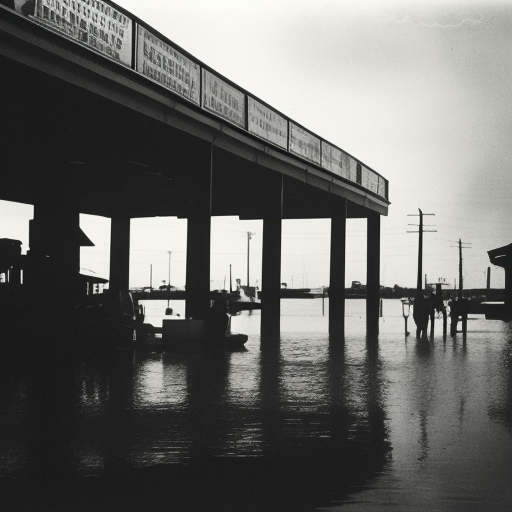Hurricane Harvey: Hurricane Harvey was a Category 4 hurricane that made landfall in Texas on August 25, 2017, causing widespread devastation and record-breaking rainfall.
Background:
Harvey originated from a tropical wave that moved off the west coast of Africa on August 13, 2017. It quickly developed into a tropical storm and continued to strengthen as it moved across the Caribbean Sea. On August 24, Harvey intensified into a Category 4 hurricane with sustained winds of 130 mph (215 km/h) before making landfall near Rockport, Texas.
Impact:
Harvey caused extensive damage along the Texas coast, with catastrophic flooding in Houston and other parts of southeastern Texas. The storm dumped over 50 inches (127 cm) of rain in some areas, resulting in widespread flooding that affected millions of people. The flooding caused numerous deaths, displaced thousands of residents, and damaged or destroyed thousands of homes and businesses.
Response and Rescue Efforts:
In response to the disaster, local, state, and federal agencies, along with volunteers and the private sector, mobilized to provide assistance and rescue operations. The U.S. Coast Guard, National Guard, and other emergency responders conducted numerous rescues, often using helicopters and boats to reach stranded individuals. The “Cajun Navy,” a group of volunteers with boats, also played a significant role in rescuing people from flooded areas.
Recovery and Rebuilding:
The recovery and rebuilding efforts in the aftermath of Hurricane Harvey were massive and ongoing. The Federal Emergency Management Agency (FEMA) provided financial assistance to affected individuals and communities, while nonprofit organizations and volunteers worked tirelessly to provide relief supplies, shelter, and support to those in need. The rebuilding process involved repairing and reconstructing damaged infrastructure, homes, and businesses.
Environmental and Economic Impact:
Hurricane Harvey had significant environmental and economic consequences. The storm caused chemical spills, released pollutants into the waterways, and damaged oil refineries and chemical plants, resulting in environmental contamination. The economic impact was also substantial, with estimates of total damages exceeding $125 billion, making it one of the costliest natural disasters in U.S. history.
Lessons Learned:
Hurricane Harvey highlighted the importance of disaster preparedness, response, and resilience. It underscored the need for improved infrastructure, flood control measures, and urban planning to mitigate the impact of future storms. The event also emphasized the importance of community involvement, volunteerism, and the coordination of resources across various levels of government and organizations.
Legacy:
The impact of Hurricane Harvey continues to be felt years after the storm. Efforts to rebuild and recover are ongoing, and the lessons learned from this disaster have influenced policies and practices related to disaster management and preparedness. The resilience and strength demonstrated by the affected communities serve as a testament to the human spirit in the face of adversity.
In conclusion, Hurricane Harvey was a devastating natural disaster that caused widespread destruction and flooding in Texas. The storm’s impact on the environment, economy, and communities was significant, and the recovery efforts have been ongoing. The lessons learned from this event have shaped disaster management practices and highlighted the importance of preparedness and resilience in the face of future disasters.












